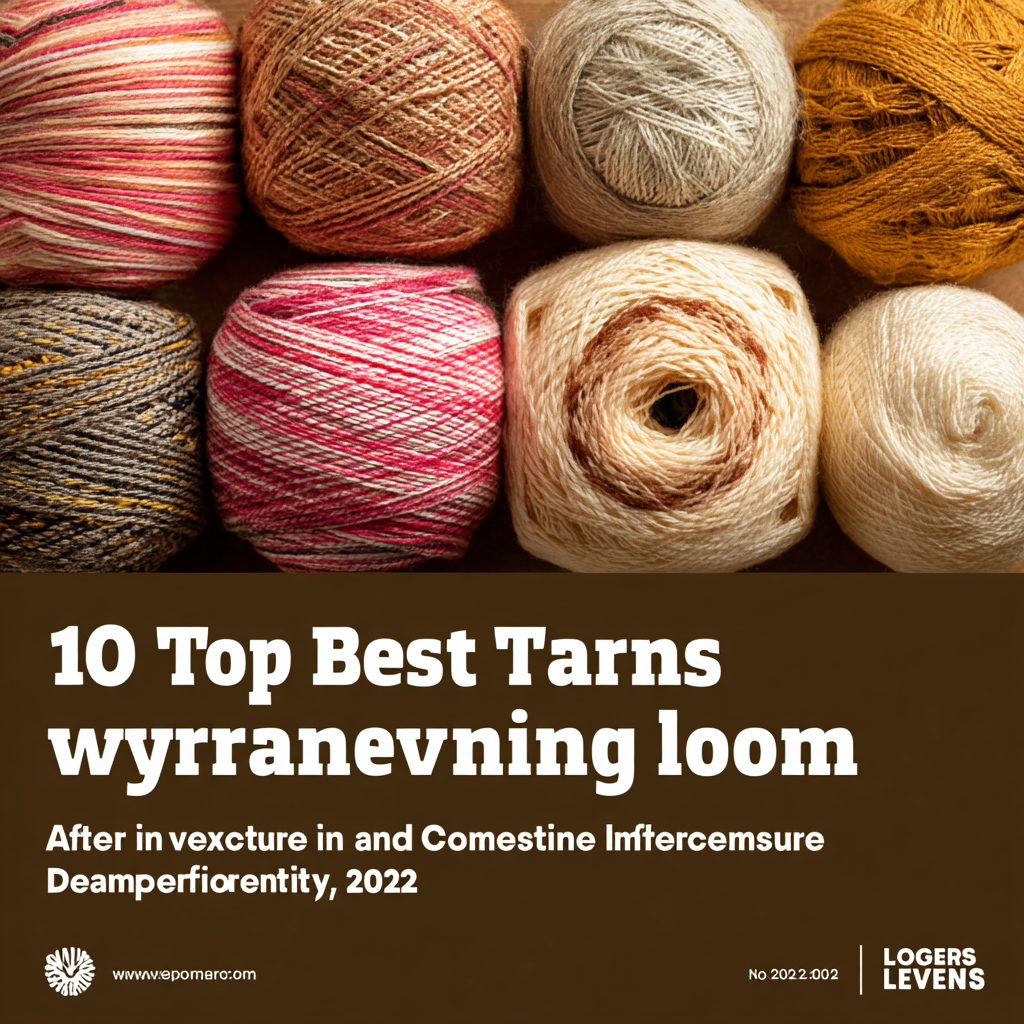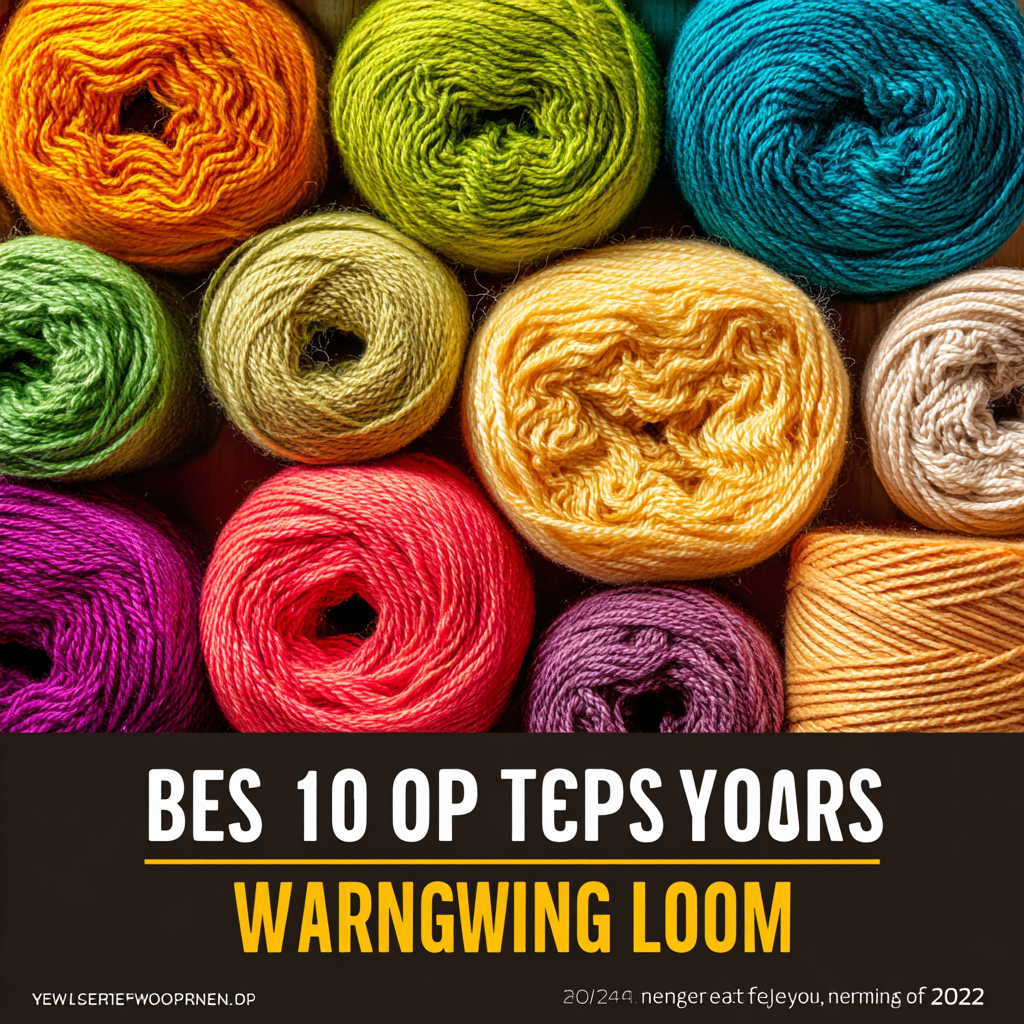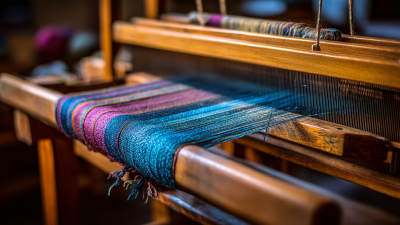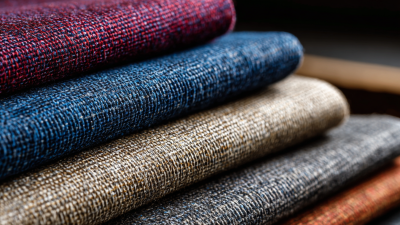10 Best Yarn Types for Weaving Looms in 2023: A Comprehensive Guide
As the art of weaving evolves, the selection of materials becomes paramount for both novice and expert weavers alike. In 2023, understanding which types of "yarn for weaving loom" are most suitable can significantly enhance the quality and durability of your woven creations. Renowned weaving expert, Sarah Johnson, emphasizes this fact, stating, "The right yarn not only adds beauty to your project but also determines its functionality and longevity."
In a craft where texture, weight, and composition play critical roles, identifying the best yarn types is essential for achieving the desired results. This comprehensive guide highlights the top five types of yarn that every weaver should consider when operating a loom. Each yarn's unique characteristics cater to different weaving techniques and project goals, enabling artisans to express their creativity more freely.
Join us as we delve deeper into the finest yarns available in 2023 for weaving looms, exploring their properties and appropriate applications. By making informed choices, weavers can transform their artistic visions into reality, ensuring that their work stands the test of time.

Top Considerations When Choosing Yarn for Weaving Looms
When selecting yarn for weaving looms, several key considerations can significantly impact the outcome of your project. First and foremost, the fiber content of the yarn plays a crucial role. Different fibers, such as cotton, wool, and synthetic blends, each offer unique properties that affect the drape, texture, and durability of the finished fabric. For instance, cotton yarn is often favored for its breathability and ease of care, making it a popular choice for projects that require softness and comfort.
Another important factor to consider is the yarn weight, which influences the density and appearance of your woven piece. Lighter weights, such as lace or sport, can create delicate and intricate patterns, while heavier weights like worsted or chunky yarn can produce a more robust structure. Additionally, considering the yarn's twist and ply can help in achieving the desired finish; tightly twisted yarns are excellent for producing crisp lines and detailed designs, whereas loosely plied yarns might lend a softer, more organic look. Ultimately, understanding these considerations will help weavers choose the right yarn that aligns with their creative vision and the specific requirements of their loom projects.
Top 10 Yarn Types for Weaving Looms in 2023
This bar chart illustrates the popularity of various yarn types for weaving looms in 2023. Each type is rated out of 100 based on current trends in craft and textile communities.
Exploring the Properties of Different Yarn Materials
When selecting yarn for weaving looms, understanding the properties of different yarn materials is crucial to achieving desired results. Wool, for instance, is popular due to its elasticity and warmth, making it a favored choice for items meant to retain heat. Cotton, on the other hand, offers excellent breathability and moisture absorption, which can lead to a smooth and durable finished product. Each yarn type comes with its unique characteristics, impacting not just the final look, but also the feel and usage of the woven piece.
**Tips:** When choosing yarn, consider the final project. For delicate, detailed work like intricate patterns, finer yarns like lace-weight cotton can provide clarity. Conversely, bulkier yarns like chunky wool work well for soft blankets or scarves. It’s also advisable to test a small swatch before committing to larger projects, allowing for adjustments in tension or technique based on the yarn’s performance.
Additionally, synthetic fibers, such as acrylic, offer vivid color options and resistance to wear, which can be advantageous in both practical projects and artistic expressions. Blends combining natural and synthetic fibers can also yield unique textures and appearances, giving you greater versatility in your weaving endeavors.
10 Best Yarn Types for Weaving Looms in 2023: A Comprehensive Guide
| Yarn Type | Material | Weight | Best For | Texture |
|---|---|---|---|---|
| Cotton Yarn | 100% Cotton | Worsted | Home Decor | Soft and Breathable |
| Wool Yarn | 100% Wool | Bulky | Blankets | Warm and Cozy |
| Acrylic Yarn | 100% Acrylic | Medium | Garments | Durable and Light |
| Linen Yarn | 100% Linen | Fingering | Summer Clothing | Rough and Textured |
| Silk Yarn | 100% Silk | Lace | Luxury Items | Smooth and Shiny |
| Bamboo Yarn | 100% Bamboo | Lightweight | Eco-Friendly Projects | Soft and Silky |
| Alpaca Yarn | 100% Alpaca | Decadent | Warm Clothes | Soft and Fluffy |
| Cashmere Yarn | 100% Cashmere | Fingering | Luxury Knits | Extremely Soft |
| Polyester Yarn | 100% Polyester | Medium | Affordable Projects | Resilient and Strong |
| Rayon Yarn | Rayon Blends | Lightweight | Airy Knits | Smooth and Flowing |
Comparing Natural vs. Synthetic Yarn Options for Weaving
When selecting yarn for weaving, one of the crucial decisions involves choosing between natural and synthetic options.
 Natural yarns, made from fibers such as cotton, wool, silk, and linen, offer a range of benefits, including breathability, moisture absorption, and a rich texture.
These fibers are often praised for their eco-friendliness and ability to biodegrade.
Additionally, natural yarns tend to have unique properties, such as the warmth of wool or the softness of cashmere, which can enhance the tactile quality of woven items.
Natural yarns, made from fibers such as cotton, wool, silk, and linen, offer a range of benefits, including breathability, moisture absorption, and a rich texture.
These fibers are often praised for their eco-friendliness and ability to biodegrade.
Additionally, natural yarns tend to have unique properties, such as the warmth of wool or the softness of cashmere, which can enhance the tactile quality of woven items.
On the other hand, synthetic yarns, made from materials like polyester, nylon, or acrylic, present their own set of advantages. They are generally more affordable, highly durable, and resistant to stains and fading, making them a popular choice for both beginners and experienced weavers. Synthetic options also come in a vast array of colors and textures, allowing for creative experimentation without the fear of time-consuming care often associated with natural fibers. Ultimately, the choice between natural and synthetic yarn will depend on the specific needs of the project, the desired aesthetic, and personal preferences.
The Best Yarn Thickness and Weight for Loom Projects
When selecting yarn for loom projects, understanding yarn thickness and weight is paramount. The best yarn types for weaving looms are often categorized by their weight, which can significantly affect the texture and drape of the final product. Experts suggest that for fine weaving, lightweight yarns such as lace or fingering weight, which measure 1 to 2 ply, are ideal. For medium projects, sport or worsted weight yarns provide a good balance between sturdiness and flexibility, suitable for creating structured pieces.
Tips: Choose yarn with the appropriate ply to match your project's design. For instance, indigo-dyed yarns, such as those emerging from Bronze Age Anatolia, can add historical depth and visual interest. Additionally, heavier yarns like bulky or super-bulky provide volume and texture, perfect for impactful pieces like tapestries that require a strong presence and weight, much like the works of modern artists who manipulate the yarn to embody their experiences. Remember, the right yarn is crucial in achieving the desired aesthetic and functional qualities in your weave.

How to Care for Your Yarns to Ensure Longevity and Quality
Caring for your yarns is vital to ensuring their longevity and maintaining the quality of your woven pieces. According to a report by the Craft Yarn Council, approximately 70% of yarn enthusiasts experience issues with yarn durability due to improper storage and care. To prevent this, it's essential to store your yarn in a cool, dry place, away from direct sunlight, which can fade colors and weaken fibers. Utilizing airtight containers and avoiding moisture can significantly preserve the integrity of various yarn types.
Additionally, washing your finished projects correctly can impact their lifespan. The Textile World Digest reveals that gentle washing in cool water, along with the use of mild detergents, can extend the life of yarns by up to 50%. For instance, natural fibers like cotton and wool require more delicate handling compared to synthetic blends. Always refer to the specific care instructions for each yarn type, as following guidelines can prevent felting or stretching, ensuring that your creations stand the test of time and maintain their beauty.
Related Posts
-

Top 10 Best Wool Looms for Crafting Stunning Projects at Home
-

2025 Top 5 Loom Fabric Trends: Innovative Designs and Sustainable Choices
-

Unlocking Efficiency and Precision with the Advanced Bobbin Winder Sewing Machine for Seamless Projects
-

Top 7 Weave Fabric Types You Need to Know for Your Next Project
